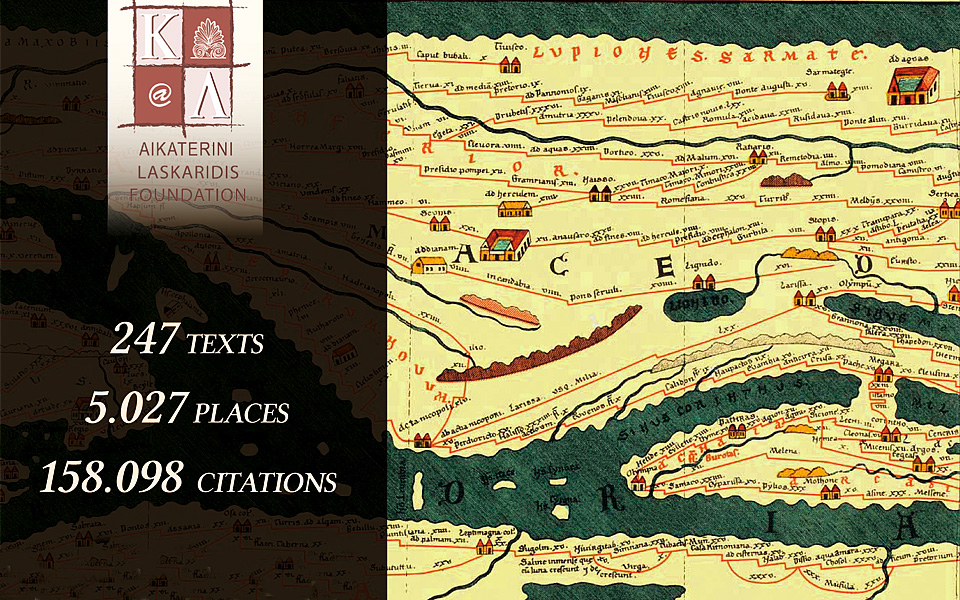Whether you’ve read Homer’s Odyssey or not, most of you are probably familiar with the resourceful and cunning hero Odysseus (aka Ulysses) who spent some ten years trying to get back home to Ithaca after having fought in Troy. You may also have read about the tragic fate of Oedipus Rex, the king of Thebes, who unknowingly married his own mother, in Sophocles’ work of the same name. But have you ever wondered if Ithaca, Troy, or Thebes were actual places. And, if they were, where they are located on the map? ToposText (where ‘topos’ in Greek means ‘place’) is a new app that links the places referenced in ancient Greek texts to their corresponding modern locations, offering students of ancient history and travelers alike a handy tool for finding their way around the ancient world.
ToposText was created with the support of the Aikaterini Laskaridis Foundation – a non-profit organization devoted to promoting Greek arts and letters – and the creative insight of Brady Kiesling, a former ancient historian and archaeologist from California. Kiesling returned to scholarship after a 20-year career as a diplomat for the U.S. State Department in Israel, Morocco, Greece, and Armenia, and currently resides in Athens, Greece.
The inspiration for the app came from his countless explorations of Greece by car, foot, or bicycle and him realizing how handy it would have been, if during his travels, he had had the written accounts of historians, travelers, or geographers, like Pausanias, at his fingertips, providing historical and cultural meaning to the places he was visiting around Greece.
Mobile technology, combined with a mass of translated ancient texts that have gradually become available in the public domain, have made it possible for the right tool to be created for all scholarly travelers like Kiesling.

The app was developed by the Greek company Pavla S.A with a map of Greece, as its basic interface, accompanied by an indexed database of more than 5000 places and over 240 ancient texts in English translation. The places include cities, colonies, sanctuaries, archaeological sites, museums, and other points of interest, relevant to the history and mythology of the ancient Greeks from the Neolithic period up through the 2nd century AD.
By selecting a place, either from the map or the list, the user is transferred to an index table of two-line snippets of all the ancient texts available in the app referencing this place, and from then onward to the full text. In the text, all place names are underlined and linked to their locations on the map. Most coordinates come from Pleiades, an online database of ancient place names and their map locations, and they are tagged by confidence level. ‘High’ means there’s definitely something ancient to be seen on the spot, while on the opposite side of the confidence scale ‘nil’ means there’s nothing visible in the area, despite some ancient author’s account.
A link next to many place descriptions connects to Travelogues, a sister web site of the Laskaridis Foundation offering thousands of early traveler illustrations of Greece and its antiquities that complement the ancient texts. The texts, index and map are stored on the mobile device and are available offline.
ToposText is a powerful educational and reference tool, but, as its creator points out, it is not a substitute for either more recent scholarly translations of ancient works, since its translations are rather old, or commercial tourist guidebooks, since it does not supply up-to-date practical information. Still, it provides both a portable Classics library, to always have at one’s fingertips, and a handy navigation tool for use even if you are stranded on some signal-less God forsaken spot in Greece, wondering if it was ever inhabited by ancients.
INFO
ToposText is available for iPad free at Apple’s app store. Soon it will also become available for the iPhone and for Android devices. Its database can also be accessed online. Particularly interesting is the News section where you can learn about Archaeological Etiquette and what to do if you stumble upon an ancient find. No, stealing is not one of the options.












